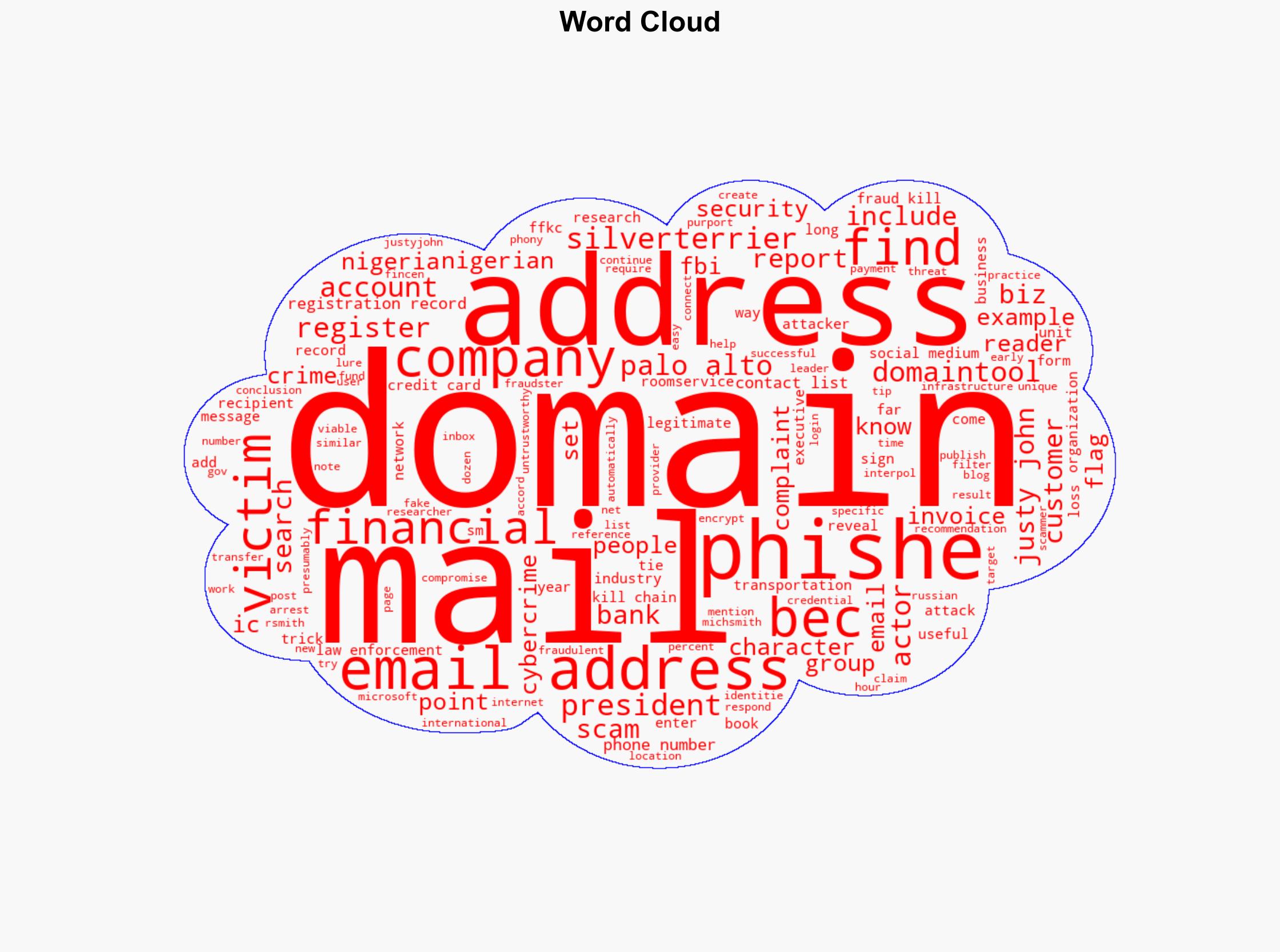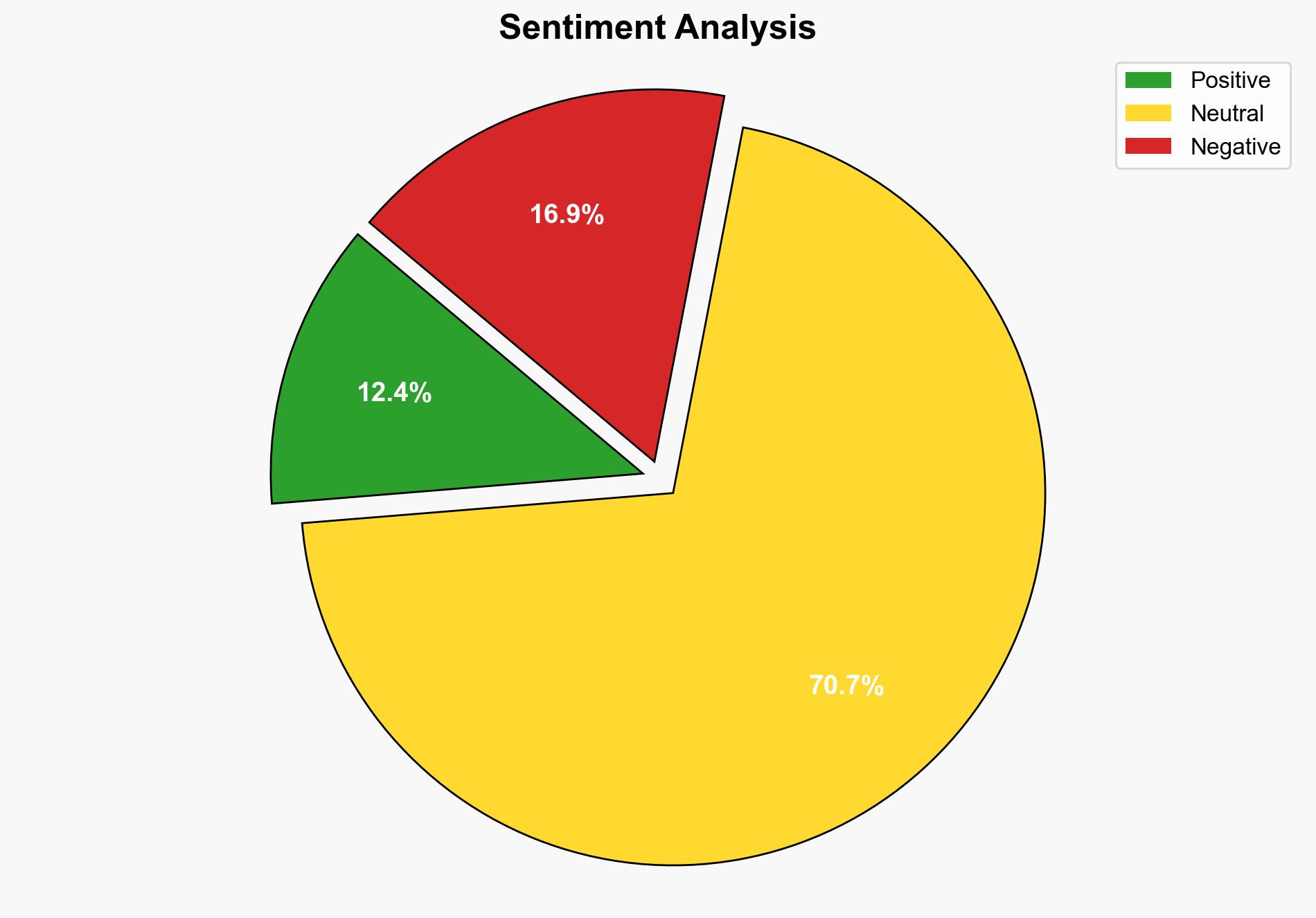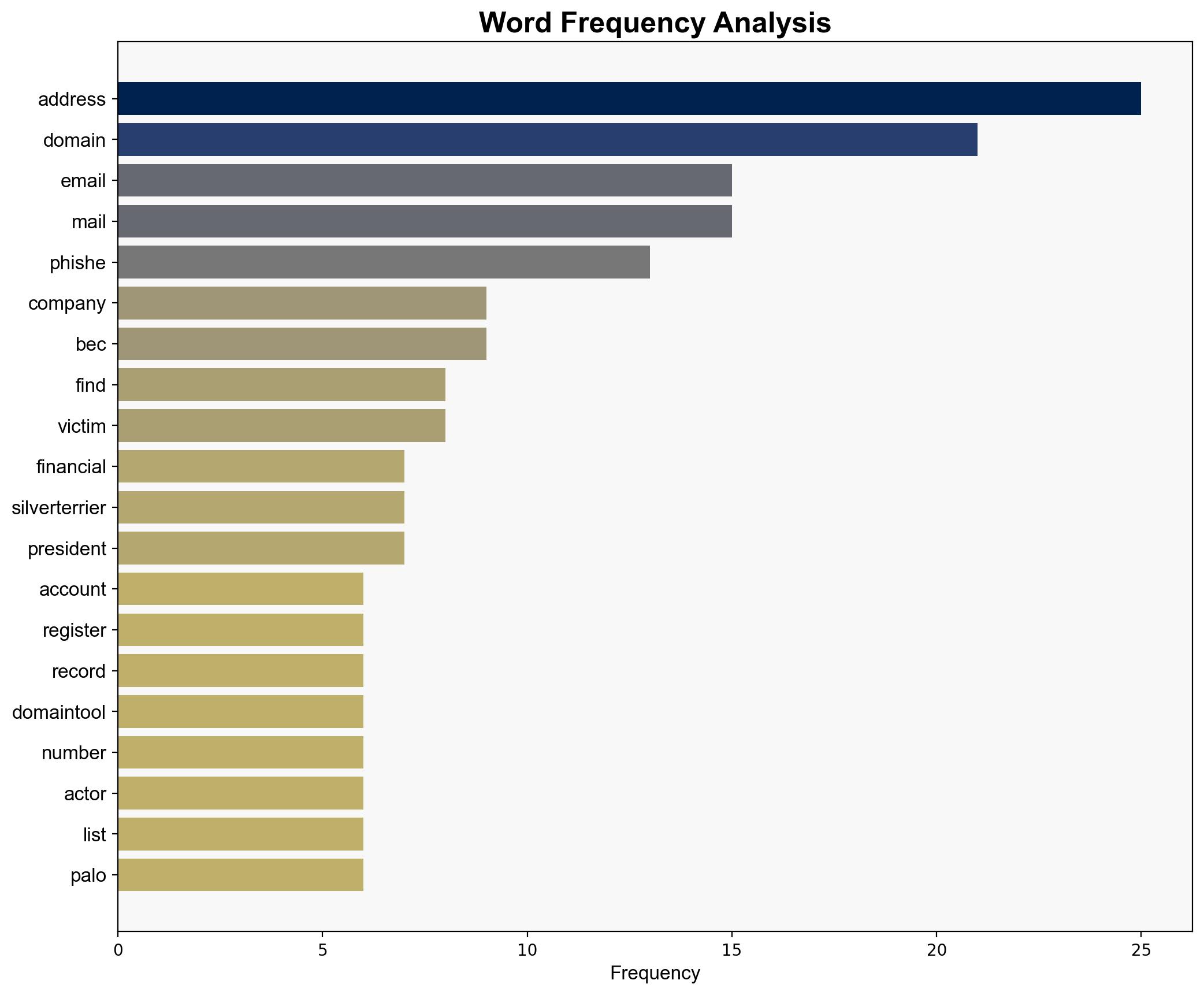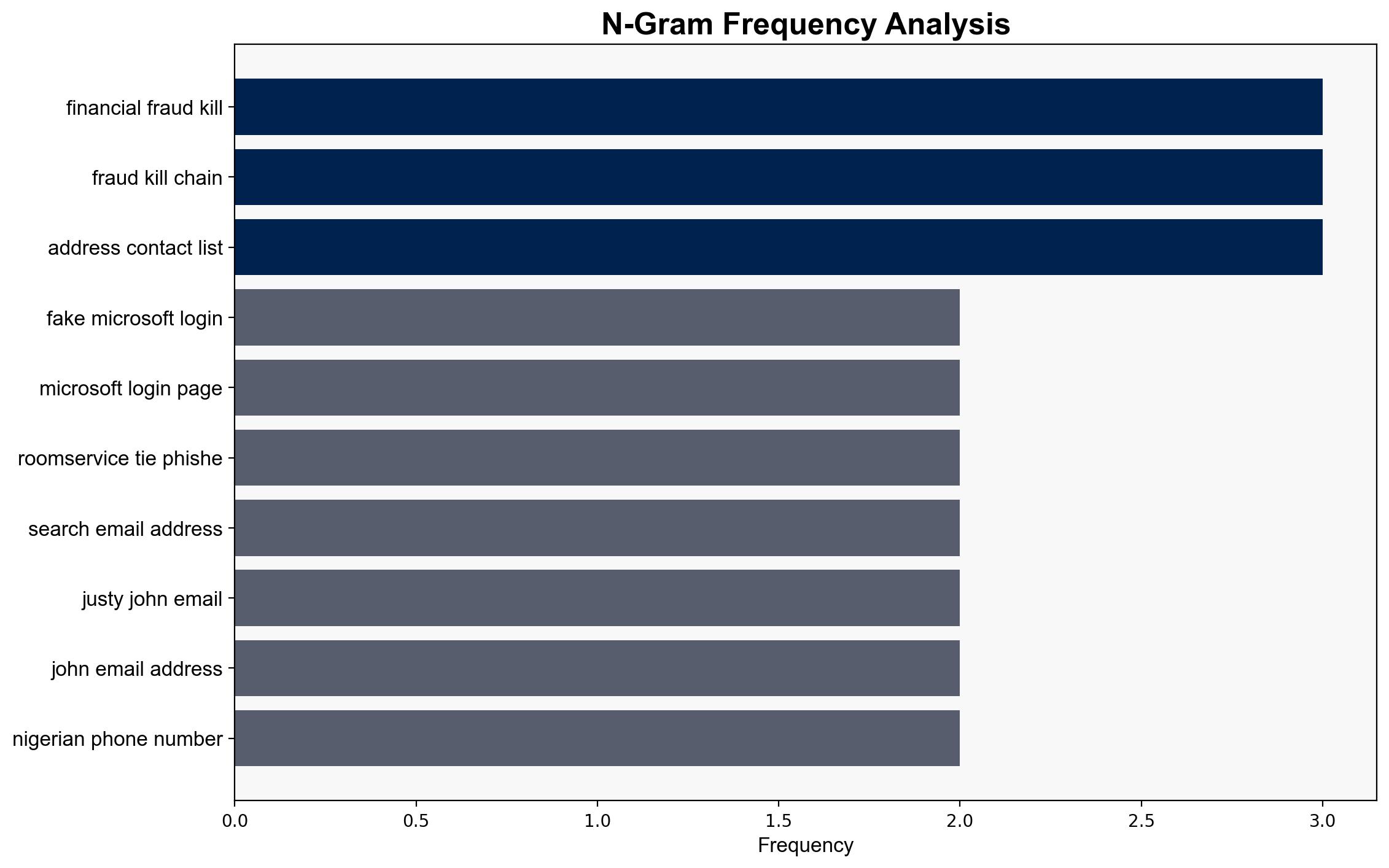Phishers Target Aviation Execs to Scam Customers – Krebs on Security
Published on: 2025-07-24
Intelligence Report: Phishers Target Aviation Execs to Scam Customers – Krebs on Security
1. BLUF (Bottom Line Up Front)
The most supported hypothesis is that a Nigerian cybercrime group, potentially linked to the “Silverterrier” group, is actively targeting executives in the aviation and transportation sectors to conduct Business Email Compromise (BEC) scams. This assessment is made with moderate confidence due to the presence of corroborating evidence such as domain registration patterns and the use of known phishing tactics. It is recommended to enhance cybersecurity measures and conduct awareness training for potential targets within these industries.
2. Competing Hypotheses
Hypothesis 1: The phishing campaign is orchestrated by a Nigerian cybercrime group, possibly “Silverterrier,” targeting the aviation sector to execute BEC scams. This is supported by the use of Nigerian phone numbers, domain registration patterns, and the group’s known tactics.
Hypothesis 2: The phishing campaign is a decentralized effort by multiple independent actors using similar techniques, rather than a coordinated group. This could be suggested by the diversity of domain registrations and the lack of a single identifiable leader or group.
3. Key Assumptions and Red Flags
Assumptions:
– The presence of Nigerian phone numbers and domain registration patterns are indicative of involvement by Nigerian cybercriminals.
– The similarity in tactics to known BEC scams suggests a link to “Silverterrier.”
Red Flags:
– The reliance on domain registration data, which can be easily falsified.
– The possibility of misattribution due to the use of proxy servers or compromised infrastructure.
4. Implications and Strategic Risks
The continuation of such phishing campaigns poses significant financial risks to companies in the aviation and transportation sectors. Successful BEC scams can lead to substantial financial losses, reputational damage, and potential regulatory scrutiny. The involvement of a known cybercrime group could indicate an escalation in the sophistication and frequency of attacks, potentially targeting more sectors.
5. Recommendations and Outlook
- Enhance email security protocols and implement multi-factor authentication to prevent unauthorized access.
- Conduct regular cybersecurity training for executives and employees to recognize phishing attempts.
- Monitor domain registration patterns for early detection of potential threats.
- Scenario Projections:
- Best Case: Increased awareness and improved security measures lead to a decline in successful phishing attempts.
- Worst Case: The group expands its operations, targeting additional sectors and increasing the scale of financial losses.
- Most Likely: Continued phishing attempts with moderate success, prompting gradual improvements in cybersecurity defenses.
6. Key Individuals and Entities
– “Justy John” and “Mich Smith” are associated with domain registrations linked to the phishing campaign.
– “Silverterrier” is a known cybercrime group potentially involved in the attacks.
7. Thematic Tags
national security threats, cybersecurity, counter-terrorism, regional focus




